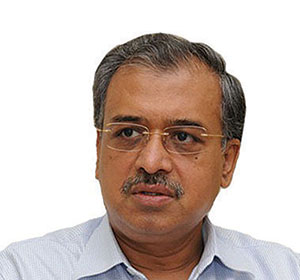“My dear countrymen, the world has changed,” India’s Prime Minister Narendra Modi told a crowd of thousands last August. “Now India cannot decide its future by remaining isolated and sitting alone in a corner.”
The remarks — made in a speech by the newly elected leader on India’s independence day roughly a year ago — echoed the widespread hope that his reformist government can overcome decades of poverty and stagnation and turn the South Asian behemoth into a global economic force to rival China.
Thousands of miles away from New Delhi, in Manhattan, a small group of brokers and financiers are hoping that such an economic boom could finally lead to a growing influx of Indian capital into New York real estate.
While India’s fellow BRIC countries — Brazil, Russia and China — have become important sources of investment in Manhattan properties, Indian investors have largely been a no show.
That doesn’t mean there haven’t been any headline deals. The two biggest are: Sahara India Pariwar’s 2012 acquisition of a 75 percent stake in the Plaza Hotel valued at around $430 million and pharmaceutical tycoon Dilip Shanghvi’s bankrolling of the condo tower at 125 Greenwich Street. But outside of that, commercial investment has been minimal.

Subrata Roy, the CEO
Sahara India Pariwar, which bought a stake in the Plaza Hotel in 2012
That, however, could soon change, observers say.
“Indians are now warming up to the idea of what’s going on in the U.S.,” said Adi Chugh, head of New York-based real estate debt brokerage Maverick Capital Partners and a native of India. Chugh said he expects to see an increase of Indian capital in New York in the next five to 10 years.
Kevin Swill, chief operating officer of real estate investment banking firm Carlton Group, is equally bullish on Indian investors.
“There seems to be a pocket of money there,” he told The Real Deal in April.
Swill said he’s repeatedly traveled to India to meet with wealthy investors.
It was the Carlton Group, run by industry heavyweight Howard Michaels, who brought Shanghvi in as an investor at 125 Greenwich, which is being developed by Michael Shvo, Howard Lorber and Bizzi Partners.
Shanghvi, the founder of pharmaceutical giant Sun Pharma and India’s seventh-richest man, provided around $40 million in equity for the 128-unit project, according to sources.
Reversing course

Pharmaceutical tycoon Dilip Shanghvi is bank- rolling the condo tower at 125 Greenwich St.
There are several reasons why Indian investors like Shanghvi are still a rare breed in New York.
The biggest one is that, despite its massive 1.4 billion population, India, of course, has widespread poverty. And while India ranks third in Asia when it comes to the number of residents with a net-worth of more than $30 million, its 8,595 total trails much smaller countries like Japan, Great Britain or Germany, according to research firm Wealth-X.
Moreover, Indian millionaires are often reluctant to invest in real estate abroad. According to a survey in a recent report by brokerages Douglas Elliman and London-based Knight Frank, ultra-wealthy Indians are plowing a mere 10 percent of the capital they’re investing into commercial real estate abroad versus 90 percent at home. In most other countries, the ultra-wealthy invest between 20 and 40 percent of that abroad.
“India’s economy is growing much faster than China’s, so there are a lot more domestic opportunities to invest,” said Maverick’s Chugh, adding that even bank deposits in India net real returns of 2 to 4 percent per year. By comparison, Manhattan cap rates — which measure an investor’s return on investment — hardly seem enticing. Over the past few years, Manhattan Class-A office cap rates have averaged around 4 percent, according to the research firm Real Capital Analytics.
Restrictions by the Indian government on how much individuals can invest abroad — no more than $250,000 per year — add another disincentive.
Another factor that has kept Indian money away from the Big Apple is competition from London, which has a large Indian population and is geographically closer to the subcontinent. “New York has always been the secondary market for Indians when it comes to overseas investments; they have always gravitated towards London,” Chugh explained.
But now, the trends that have held Indian investment back are showing signs of reversing. While the economies in China and Brazil have slowed considerably and Russia fell into recession last year, India’s economy grew by an annualized 7.5 percent in the first quarter of 2015.
And while it has fewer ultra-wealthy citizens than China, that group is growing at a much faster pace. Between 2013 and 2014, the number of Indians with a net worth of more than $30 million grew by 8.3 percent, compared to 3.3 percent in China. This trend, compared with the promise of economic reforms under Modi’s government, raises the prospect that India could soon have more wealth to export.
Meanwhile, London’s soaring housing prices have cost the market some affection among Indian buyers, observers say.
“Four years ago, London was so hot they didn’t want to bank on New York City,” said Jason Lanyard, a broker at Stribling & Associates. But now, he said, Indian investors are increasingly drawn to New York, which they believe now offers higher returns than London.
Wave one
Like Chinese investment in New York just a few years ago, the first wave of true widespread Indian investment here will likely be from residential buyers.
Lanyard and his partner Nicole Grandelli, who claim to have sold more than 30 New York apartments to Indian buyers over the past eight years, said they have noticed growing interest from the subcontinent. But unlike, say, Russian buyers, Indians have shown little interest in the priciest penthouses. (The broker pair represented an Indian buyer many years ago and have expanded that network through referrals and several trips to India.)
“They want to buy the property that is just going to have the most value,” said Grandelli. She explained that most of their Indian buyers — they current have 10 actively in the market — prefer to rent out apartments, rather than keep them as pieds-à-terre.
One building that has attracted a number of Indian buyers is 50 West in the Financial District, which is being developed by Time Equities.
“We had more people from India than we expected,” said Javier Lattanzio, the director of sales at 50 West, adding that he sold a handful of two- to four-bedroom apartments ranging in price from $3.5 million to $12 million to Indian investors.
The big question is whether Indian investors will repeat the storyline of their Chinese counterparts, who made large-scale investments in commercial real estate after apartment buyers had blazed the trail.
Chugh predicted that Indian investment in New York commercial real estate will pick up, in part through the EB-5 program, which offers potential citizenship to foreign investors in exchange for economic investment in the U.S. Although Indian EB-5 investment in U.S. real estate is minuscule compared to Chinese, it’s seen strong growth over the past few years, according to data from the U.S. Department of State. Between 2011 and 2014, the annual number of EB-5 visas issued to Indians grew to 96 from 37.
According to Chugh, that growth is part of a mental shift among Indian investors.
“A lot of people have been hesitant [to invest in New York],” he said. “That trend is now changing because people are seeing this more as a very solid market, as the epicenter of the economy that has stayed resilient during the
recession.”